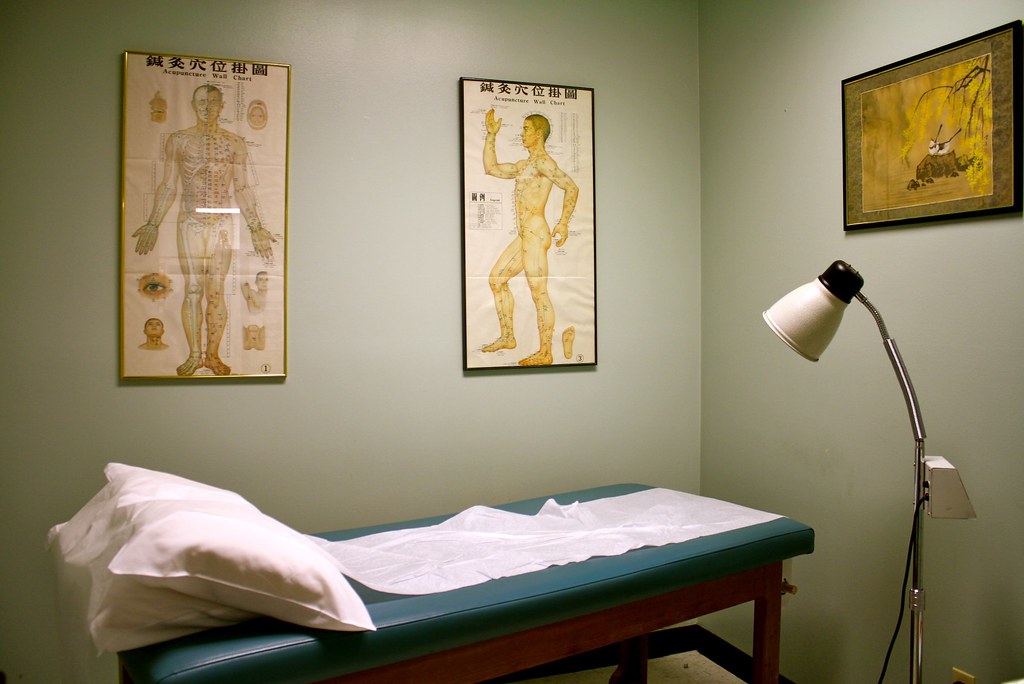In the realm of ancient medical texts, few hold as much intrigue and historical significance as the 1700-year-old ‘Post-elbow Preparation Formula,’ a remarkable document that has earned the moniker of the ‘medical book of crossing.’ This label draws attention to its extraordinary relevance in the context of historical medical practices and its prescient descriptions that resonate even with contemporary medical discoveries, showcasing its timeless value.
‘Post-elbow Preparation Formula’ had a long history.
To begin our journey, it’s essential to understand the historical backdrop against which this formula emerged. The ‘Post-elbow Preparation Formula’ is deeply intertwined with the medical advancements that have taken place throughout history. One of the most notable moments occurred in 1928 when the esteemed French physician, Nicol Likin, identified the source of typhoid fever. This discovery awarded him the coveted Nobel Prize in Medicine, a recognition of his significant contribution to our understanding of infectious diseases, highlighting the formula’s enduring impact.
What is particularly fascinating about the ‘Post-elbow Preparation Formula’ is its early recognition and documentation of the infectious agents linked to diseases like typhoid fever. The text of the formula, originating around 1700 years ago, provides a detailed account that predates modern medical findings, demonstrating an advanced understanding of medical conditions that was far ahead of its time.
The ‘Post-elbow Preparation Formula’ can be linked to the renowned Bald’s Leechbook, also known as Medicinale Anglicum. This historical medical text, likely compiled in the mid-tenth century, represents a unique contribution to the understanding of medieval medicine. While Bald’s Leechbook is often recognized for its comprehensive compilation of medical remedies, it also offers a glimpse into the medical practices of the Anglo-Saxons during a time that was heavily influenced by both local traditions and contemporary Mediterranean medical knowledge.
The initial perception of the term ‘Leechbook’ may lead one to think of leeches themselves, but it actually stems from the Old English term lǣċe-bōc, which translates as ‘book of medical prescriptions.’ This description emphasizes the book’s role as a source of healing and remedies rather than an association with the bloodsucking creatures, showcasing the evolution of medical terminology throughout centuries.
The manuscript of Bald’s Leechbook is a treasure trove of knowledge, surviving in a single copy housed at the British Library in London. This survival is significant, as it offers a direct window into the medical practices of the Anglo-Saxons, their remedies, and illustrative treatments for various ailments. The manuscript, alongside its counterpart, Leechbook III, is accessible in digitized form, allowing a wider audience to explore this remarkable piece of history and appreciate its historical significance.
Bald’s Leechbook is diligently organized into two parts, each serving a distinct purpose. The first book focuses on external maladies, addressing ailments that affect the skin and outer body, while the second book tackles internal disorders, shedding light on the myriad ways in which the body can be afflicted by illness. This division is quite unique for medieval medical texts, as noted by commentators, reflecting a structured approach to medical treatments that was progressive for its time.
Among the remarkable insights revealed in Bald’s Leechbook is the mention of the earliest known surgical procedure for cleft lip and palate in Anglo-Saxon records. This pioneering recipe not only underscores the surgical knowledge of the time but also highlights the importance of considering physical deformities as treatable conditions, a concept that would evolve significantly in later medical practice.
In an age where infections were commonplace due to agrarian lifestyles, the text’s instructions for treating various wounds and ailments resonate with the challenges faced by its contemporaries. Notably, the remedy for shingles involves a complex potion concocted from the bark of fifteen different trees, demonstrating the extensive observational knowledge that practitioners had regarding botanical and herbal properties.
What is particularly captivating is the modern relevance of some remedies found within Bald’s Leechbook. For instance, research conducted in 2015 confirmed the efficacy of Bald’s eyesalve recipe—a mix of garlic, leeks, wine, and cow’s bile—against methicillin-resistant Staphylococcus aureus (MRSA), a dangerous hospital superbug. This discovery has reignited interest in medieval medicine, suggesting that ancient wisdom may hold valuable insights for modern medical challenges.
The journey of the ‘Post-elbow Preparation Formula’ and Bald’s Leechbook is not just a tale of historical significance; it also highlights the evolving nature of medical understanding through the centuries. As we dive deeper into historical texts, we uncover layers of knowledge that continue to inform and inspire contemporary practices, with many researchers and practitioners looking to the past to address modern medical dilemmas.
The ‘Post-elbow Preparation Formula’ stands as a testament to the ingenuity of ancient medical practitioners and their ability to document and understand complex medical phenomena. Its connection to Bald’s Leechbook and the insights it provides into medieval medical practices affirm its status as a vital piece of medical history. This remarkable text not only serves as a window into the past but also invites us to reflect on the rich tapestry of knowledge that has shaped our understanding of health and healing today.

Bald’s Leechbook can teach people a lot.
As we venture deeper into the intricate layers of Bald’s Leechbook, we find a remarkable treasure trove of medical knowledge that speaks volumes about the sophistication of Anglo-Saxon medicine. This ancient text, a historical gem, offers insights not just into remedies and cures, but also into the very fabric of societal beliefs and practices surrounding health and illness during its time. The dual nature of the Leechbook—its treatment of both external and internal ailments—provides a fascinating lens through which to examine the medical understanding that prevailed in medieval England.
The first book of Bald’s Leechbook, meticulously focused on external maladies, delves into a myriad of conditions ranging from skin diseases to wounds. This separation of external and internal disorders is particularly noteworthy; as cited, it may be unique within medieval medical texts. The detailed prescriptions documented within provide a glimpse into the healing practices that sought to alleviate physical suffering through a combination of herbal remedies, surgical interventions, and even charms, reflecting the holistic approach of the time.
One particularly enlightening aspect of the Leechbook is its pioneering approach to surgical procedures, exemplified by the mention of the earliest known surgical intervention for cleft lip and palate in Anglo-Saxon records. This not only underscores a commendable level of surgical knowledge but also reflects a progressive attitude towards treating physical deformities—a concept that would evolve further in future medical practices. It is a testament to the ingenuity of the practitioners who, despite the limited resources at their disposal, sought to devise effective solutions for challenging medical problems, showcasing their resilience and innovation.
Among the recipes contained within this historical manuscript, there exists a striking blend of practicality and mysticism. For instance, one remedy for headaches involves binding a stalk of crosswort to the head with a red kerchief, showcasing the combination of natural remedies with ritualistic practices that characterized early medicine. Such treatments echo the deep interconnectedness of health and spirituality in medieval society, where the physical and metaphysical realms were often seen as intertwined.
The treatments for ailments documented in Bald’s Leechbook reveal a keen understanding of the natural world and its medicinal potential. Each recipe is imbued with the knowledge passed down through generations, with ingredients that range from the commonplace to the exotic. A fascinating example is the recipe for shingles, which prescribes a potion made from the bark of fifteen different trees, showcasing both the depth of botanical knowledge possessed by the practitioners and the lengths to which they would go to treat their patients.
Moreover, the relevance of these ancient remedies continues to resonate in our modern world. In a striking instance of this historical wisdom finding its way back to the forefront of contemporary medicine, research conducted in 2015 revealed that Bald’s eyesalve recipe—comprising garlic, leeks, wine, and cow’s bile—exhibited remarkable efficacy against methicillin-resistant Staphylococcus aureus (MRSA). Such findings have sparked renewed interest in exploring medieval texts for insights that might inform current medical practices and address challenges posed by antibiotic resistance.
The interplay of local and Mediterranean medical knowledge within Bald’s Leechbook further enriches its legacy. The text exemplifies a synthesis of traditional Anglo-Saxon practices and the more advanced methodologies of neighboring cultures. This blending of knowledge was not merely a matter of practicality; it reflects a broader network of communication and exchange that drove the evolution of medical understanding in early medieval England. The effort to combine native and Mediterranean wisdom signifies a pivotal moment in the history of medicine, where the boundaries of knowledge were expanded through collaboration and cultural exchange.
As we explore the content of Bald’s Leechbook, it is impossible to overlook the broader implications of its existence. This text serves as a mirror reflecting the societal values of the time, where health, healing, and knowledge were actively negotiated through a combination of empirical observation and traditional beliefs. The Leechbook stands as a testament to human resilience, creativity, and the enduring pursuit of healing against the backdrop of a world fraught with infections and diseases.
Furthermore, the survival of this remarkable manuscript in a single copy, housed in the British Library, emphasizes its significance. It is not merely a relic of the past; it serves as an invaluable resource for historians and medical researchers alike, granting us a glimpse into the intricate tapestry of medieval medicine. The digital availability of the manuscript has opened doors for a wider audience to engage with this rich body of knowledge, allowing for greater appreciation and understanding of our medical heritage, bridging the gap between past and present.
In traversing the pages of Bald’s Leechbook, we are not just reading a medical text; we are embarking on a journey through time. Each recipe, each remedy speaks to the hopes and fears of those who sought to heal, revealing the universal human desire to understand and conquer illness. We are reminded that the roots of modern medicine are deeply intertwined with the wisdom of the past, a past that continues to inform and inspire the present.

The legacy of the ‘Post-elbow Preparation Formula’ and Bald’s Leechbook transcends their time, urging us to reflect on the progression of medical practices and the ways in which our understanding of health has evolved. As we stand at the intersection of history and modernity, we can draw strength from these ancient texts, recognizing that the journey of healing is an ongoing narrative—one that binds humanity across the ages in its quest for knowledge, understanding, and wellness. Ultimately, as we delve into the annals of medical history, we uncover not just prescriptions for ailments, but a profound connection to our shared humanity, a testament to the enduring spirit of inquiry that defines us all, inspiring future generations.
Related posts:
Bald’s Leechbook




